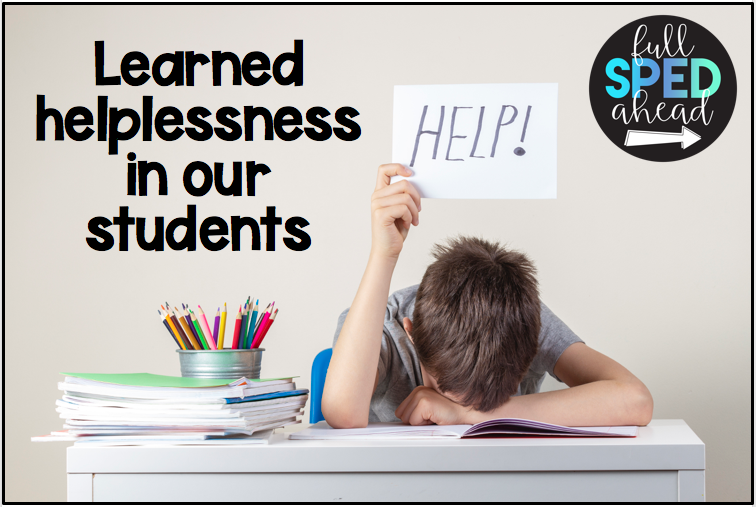Students have been at home doing remote learning. They have been in school doing in person learning. Students have also had to do a combination of both with hybrid learning. Students are confused.
When are they expected to work by themselves? When are they expected to work with an adult?

Many teachers are struggling with pandemic influences that have caused a version of learned helplessness.
Students aren’t sure what to expect when it comes to work completion.
Learned helplessness is a condition in which a person suffers from a sense of powerlessness, arising from a traumatic event or persistent failure to succeed.
Learned helplessness teaches students that they are not good enough at doing something or that someone can do it better than them. They get a sense of feeling that they can no longer do something and they need more help than previously shown.
For example, students may have been able to complete a math addition worksheet by themselves when in the classroom, but now they’ve experienced at home learning where their siblings and parents were readily available to support them through the work. They were getting the reinforcement that they could no longer complete work by themselves.
Now, I am not blaming parents or families for this. There are many reasons why parents supported their children through their school work at home. Teachers are completely thankful for the support students were getting at home.
Want to know more about learned helplessness? Check out this article from Edutopia.
There are a couple things teachers can do to reshape the behaviors caused by learned helplessness.
A teacher may want to consider group rewards if the majority of the class or all of the class is showing learned helplessness in an area. We all know regression has happened with our students, so a group reward system would be good to reset this behavior. It looks like this:
“… if every student finishes their work this period, we can have a 5 minute break at the end for X”.
This way students are working together to accomplish the goal that is motivating for them. This helps them relearn that they are capable of completing work to earn something positive at the end!
A teacher may want to consider individual rewards if one or two students are showing learned helplessness behaviors. It looks like this:
“…if you complete 5/10 questions on this activity, you can get X”.
You can have the student pick the 5 questions they do. This gives them a sense of ownership back in their work. You can also assign those 5 questions if that would be too much for your student. As your student gets more confidence in their work completion, you add to the amount of work. They still get a motivating reward at the end of the activity.
Think about it this way: There are days that you do not want to go to work, you do it anyways. Throughout the day, you tell yourself, “at least it’s Wednesday, I’m halfway through the week” or “I can watch my favorite TV show tonight and relax at home”. You are reminding yourself of the positive aspects of your future. Adults have motivation and rewards waiting for them in the future once they get a task done. Students want the same things.
Many students were working on shortened schedules and less expectations with remote learning when schools shut down in March. Understand that students need to adjust to the increased workload and hours in the school day. Start slow to build momentum this school year.
Make sure to limit the amount of work that the student is required to do. Increase the amount of work as they show the skills and confidence to complete work again.
As a leader in the classroom, work with your staff to come up with a schedule for how much support each staff member will provide to the students. This could be on a rotational or timed schedule.
Learn more about how to help your students gain more confidence in themselves here!
Read more about how to help support your students during Morning Routines
Instagram | TeachersPayTeachers | Facebook | Boom Learning Library | Pinterest | Youtube
What are you looking for?
COPYRIGHT © 2025 Full SPED Ahead